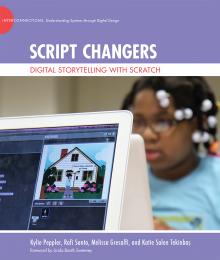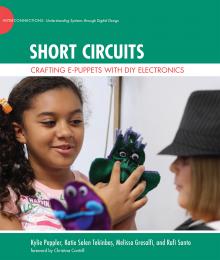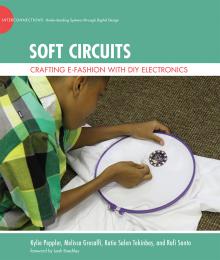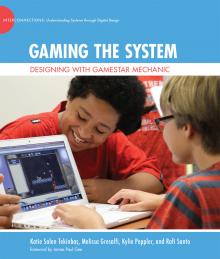by Jane Sevier

In an increasingly digital world, it is vital for young learners to be adept at “systems thinking”—the ability to understand how related components in systems—from ecosystems to social networks—work together. Unfortunately, educators have struggled to find curriculum that keeps pace with the rapidly changing digital environment.
Now, a four-book series created by a national team of designers and educators provides a curricular toolkit for supporting systems thinking, drawing on game design, digital storytelling and DIY electronics.
Interconnections: Understanding Systems through Digital Design (2014, MIT Press) offers activities aligned with Common Core and Next Generation Science Standards that help students see, anticipate and understand patterns in the systems that make up their world—and sets them on a path to designing systems of their own.
“Digital media have become central to how we communicate and share knowledge,” said co-author Melissa Gresalfi, associate professor of mathematics education at Vanderbilt Peabody College of education and human development.
“To prepare young people for the demands of a complex and connected new century, we must help them develop systems thinking, which allows them to see what part systems play in the digital realms they engage in, and shows them how to become designers of those systems.”
Gaming the System: Designing with Gamestar Mechanic
This book demonstrates the nature of games as systems; how game designers need to think in terms of complex interactions of game elements and rules; and how to identify systems concepts during design. Activities include using Gamestar Mechanic, an online game design environment that focuses on systems thinking.
 Script Changers: Digital Storytelling with Scratch
Script Changers: Digital Storytelling with Scratch
This book shows the ways that stories offer a lens for seeing the world as a series of systems. The book provides opportunities for students to craft interactive and animated stories about creating positive change in their communities. These projects use the Scratch visual programming environment.
 Short Circuits: Creating E-Puppets with DIY electronics
Short Circuits: Creating E-Puppets with DIY electronics
This book enables students to undertake physical computing projects, providing tools and methods for creating electronic puppets. Using shadow puppet shows featuring their own DIY flashlights, students learn how to incorporate microprocessors into everyday materials and use them to enhance their language and writing skills.
 Soft Circuits: Crafting E-Fashion with DIY Electronics
Soft Circuits: Crafting E-Fashion with DIY Electronics
This book introduces students to the world of wearable technology. With Modkit, an accessible DIY electronics toolkit, students learn to fashion e-textile cuffs, electric T-shirts, and solar-powered backpacks. Students also learn the importance of one component to the whole—how, for example, changing the structure of LED connections immediately affects the number of LEDs that light up.
The Interconnections series provides readers with supplemental materials, links to resources and related forums, and is useful for both in- and out-of-school settings. The books are authored by educators and designers from Vanderbilt University, the Digital Youth Network at University of Chicago, Indiana University’s Creativity Labs, the Institute of Play in New York City, and the National Writing Project. The Interconnections collection is part of The John D. and Catherine T. MacArthur Foundation Series on Digital Media and Learning.
The National Writing Project launched the series at its annual meeting in Annapolis, Maryland, Nov. 20.
